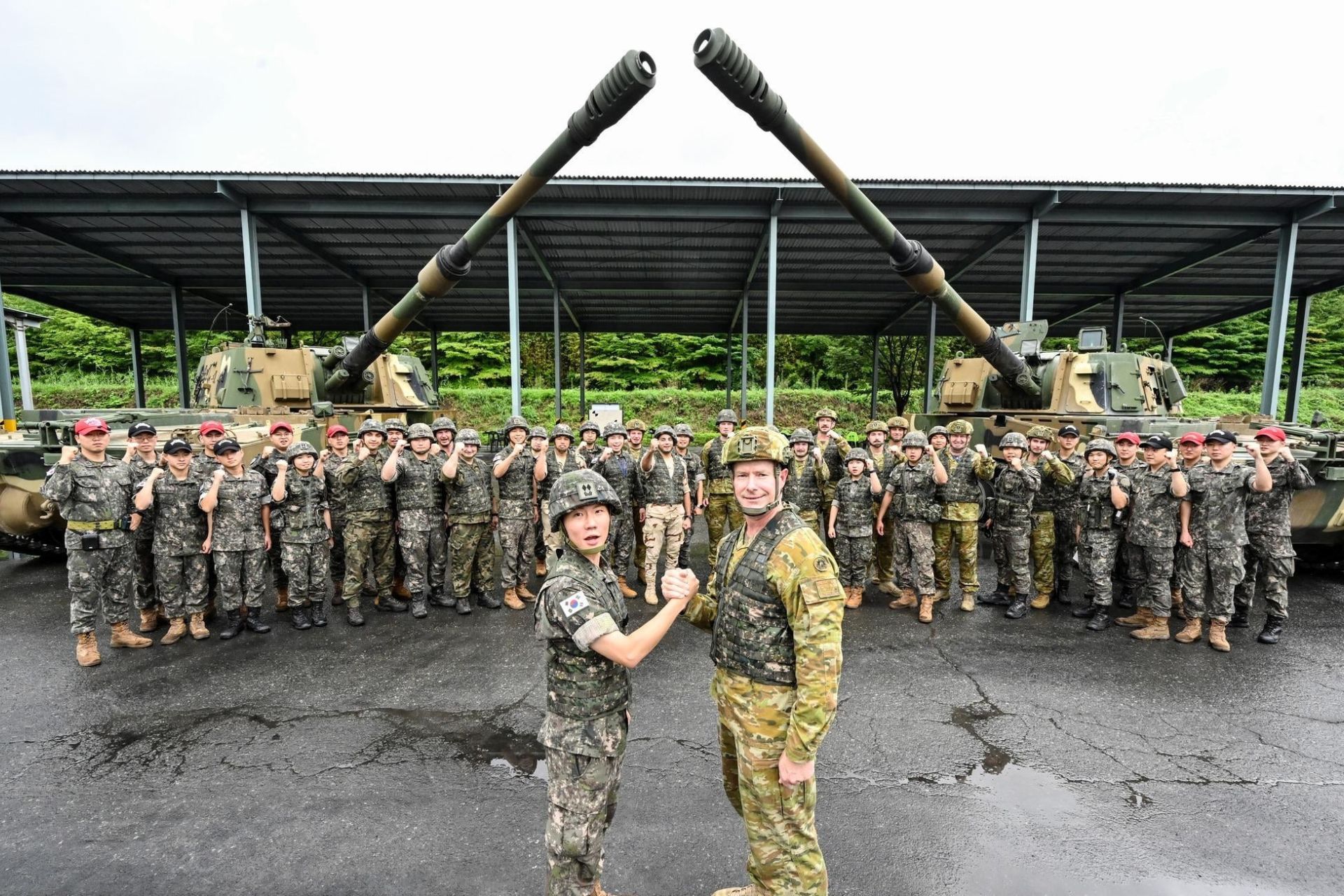Breaking News
Australian Gunners Train in South Korea Ahead of K9 Howitzer Integration.
In August 2024, Australian and Republic of Korea soldiers participated in a familiarization course in South Korea to prepare for the operation of the K9 howitzer and the K10 armored ammunition resupply vehicle. This training is a crucial step in the modernization of Australian artillery, as the country plans to incorporate these advanced systems into its arsenal.
Follow Army Recognition on Google News at this link

Australia's acquisition of K9 Thunder self-propelled howitzers began in September 2020 when the government confirmed the purchase of 30 K9 howitzers and 15 K10 vehicles from South Korea's Hanwha Defense (Picture source: Australian MoD)
Australia's acquisition of K9 Thunder self-propelled howitzers began in September 2020 when the government confirmed the purchase of 30 K9 howitzers and 15 K10 vehicles from South Korea's Hanwha Defense. These vehicles, known as AS9 Huntsman and AS10 in Australia, are expected to enter service by 2028, primarily with the 4th Regiment, Royal Australian Artillery.
The K9 Thunder, a 155mm/52 caliber self-propelled howitzer, has a maximum firing range of 40 km with rocket-assisted projectiles and can fire up to 6 rounds per minute. Equipped with an automatic fire-control system, it can fire three rounds in 15 seconds on different trajectories. This enables rapid deployment and fire, taking just 30 seconds when stationary or 60 seconds on the move, which reduces the risk of counter-battery fire.
During the training, Lance Bombardier Lachlan Kirk, one of nine Australian gunners involved, fired the K9 for the first time and noted that the recoil was less intense compared to the M777 howitzer. The Australian gunners are being trained to become future instructors on the system, requiring a deep understanding of its capabilities and operation.
In this training, each gunner had the opportunity to fire 155mm rounds from the K9. The automatic aiming system simplifies the firing process, where the gunner reviews the fire control data, positions the gun, and presses a button to fire. The K9 also offers manual and semi-automatic modes for adjustments or direct fire. The training included maintenance tasks such as removing the muzzle and tracks for repairs.
Lance Bombardier Kirk highlighted the ease of reloading the K9 using the K10, which eliminates the need for manual ammunition handling. The K10, carrying 104 rounds, connects to the rear of the K9, and a conveyor belt feeds the ammunition into the K9, reloading the vehicle in 20 minutes.
Sergeant Jake Brown, an experienced instructor on the M777, pointed out the main difference with the K9 is its ability to fire and move quickly. The K9 can stop and fire within 60 seconds when moving, or 30 seconds when stationary, allowing it to fire and relocate to avoid counter-battery fire. Brown also noted that the driver training for the 50-ton armored vehicle was a valuable part of the course, as maneuvering tracked vehicles is new for gunners used to the M777.
By the end of next year, a more advanced train-the-trainer course will be conducted to prepare instructors who will teach recruits from the 4th Regiment, Royal Australian Artillery at Puckapunyal. The Australian versions, the AS9 Huntsman and AS10, will feature enhancements such as increased internal height, modernized fire control systems, additional storage, and air conditioning.
By 2028, the Australian Army expects to have 30 AS9s and 15 AS10s in service, primarily operated by the 4th Regiment in Townsville.


























